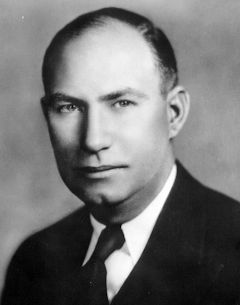
by Ashley Zimmerman
Somehow, somewhere, in Colorado in 1937, the governor’s office appeared to have a mole problem. The names of judicial and political appointees were being published in the Denver Post before the appointees had even been notified. Teller Ammons, the colorful and somewhat profane governor of the state, was upset and confused. Who could possibly be leaking his information to the press? The young governor, elected at age 39, was born in Denver and spent his younger years on his father’s cattle ranch in Douglas County. He attended and graduated from North High School in Denver before serving in the United States Army during World War I. After returning home, Ammons hired on as a clerk for Denver Mayor Ben Stapleton. While clerking, Ammons also attended Westminster Law School and earned his law degree in 1929.
The next year, in 1930, Ammons was elected to the state senate. During his years in the senate, he served as chair of the Temperance Committee and Judiciary Committee. He introduced the bill that outlawed hanging as the method of capital punishment for the state, and he was instrumental in passing the bill authorizing use of the gas chamber for executions. In 1935, Senator Ammons resigned when Mayor Stapleton appointed him Denver city attorney. It was clear that Ammons was working his way up the political ladder, and he became known as a power player in the Denver Democratic Party. He was elected governor in 1936.
As governor, Ammons pushed through a service tax to fund the state’s expenses instead of using already-raised funds from the recently enacted state income tax that were earmarked for education. Despite numerous special interest groups pressuring him, Governor Ammons refused to tamper with the existing funds. As a result, he was highly criticized for his handling of state funds and attracted intense public opposition. During the later years of the Great Depression, Governor Ammons established the State Game and Fish Department and the State Water Conservation Board, and he dealt with water rights disputes between New Mexico, Nebraska, Colorado, and Kansas.
Perhaps the most memorable moment from his term, however, was the aforementioned mysterious mole incident.
Governor Ammons was frustrated. Appointments were being made public, information was being leaked to the press, and no one seemed to have a clue as to who was breaking the confidence of the governor. Governor Ammons remarked, years after the incident, “One day a man came into my office, called me over to the window and whispered that there were microphones in my office.” The man, who was not identified by Governor Ammons, was right. A sweep was conducted of the governor’s office, and two microphones were found in the vents. The microphones were connected to a phone line that led to an apartment five blocks away, which belonged to a private detective named Jack H. Gilmore.
Gilmore was in cahoots with Walden E. Sweet, a reporter for the Denver Post, and Earl H. Ellis, an attorney who hired both Sweet and Gilmore. The entire scandal prompted a grand jury investigation, and the three men involved were convicted on eavesdropping charges. Ellis was disbarred. The transcripts obtained were printed in the newspapers, and the entire situation earned a mention in the September 20, 1937, issue of TIME. “I don’t know. . . what they were trying to get on me,” Governor Ammons reflected, later admitting that he brought a lot of it on himself. “When I took office, I resolved that I would not be dominated by any man or any faction or any newspaper.”
Though the recordings from Governor Ammons’ office did not produce any incriminating information against the governor, he did not win a second term in office. “It was embarrassing to a lot of people, but the worst thing was what my mother said: ‘I didn’t know Teller used that kind of language!’.”
Click here for the quote and information from the James O. Chipman and Erin McDanal biography on the State Archives website.
